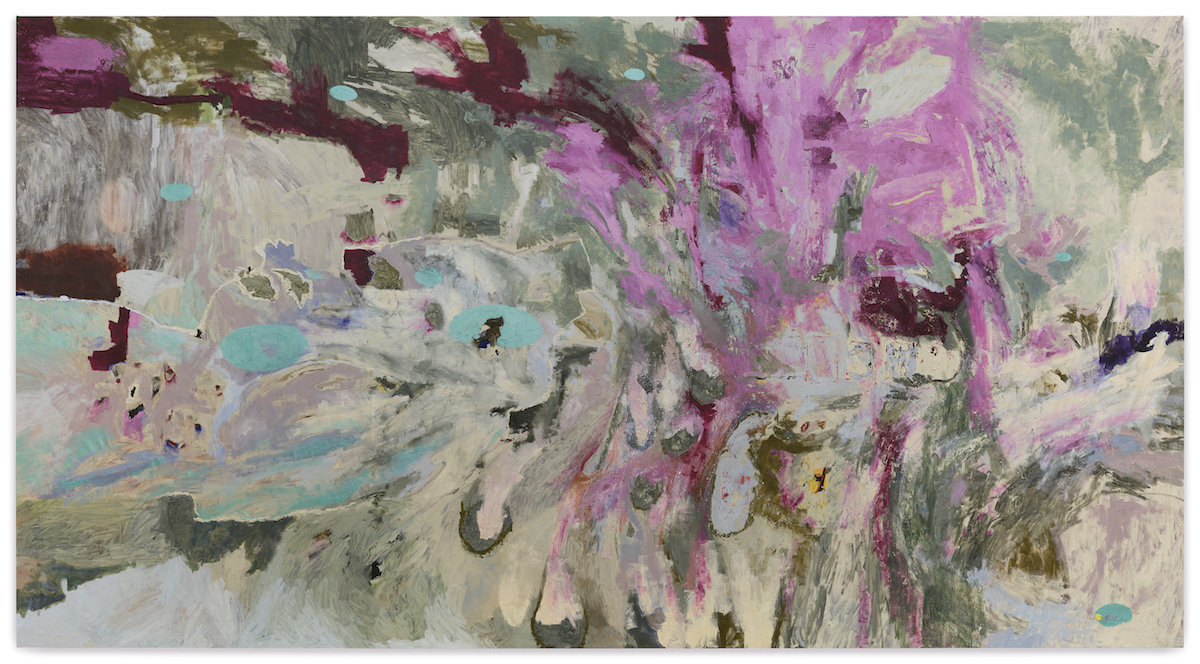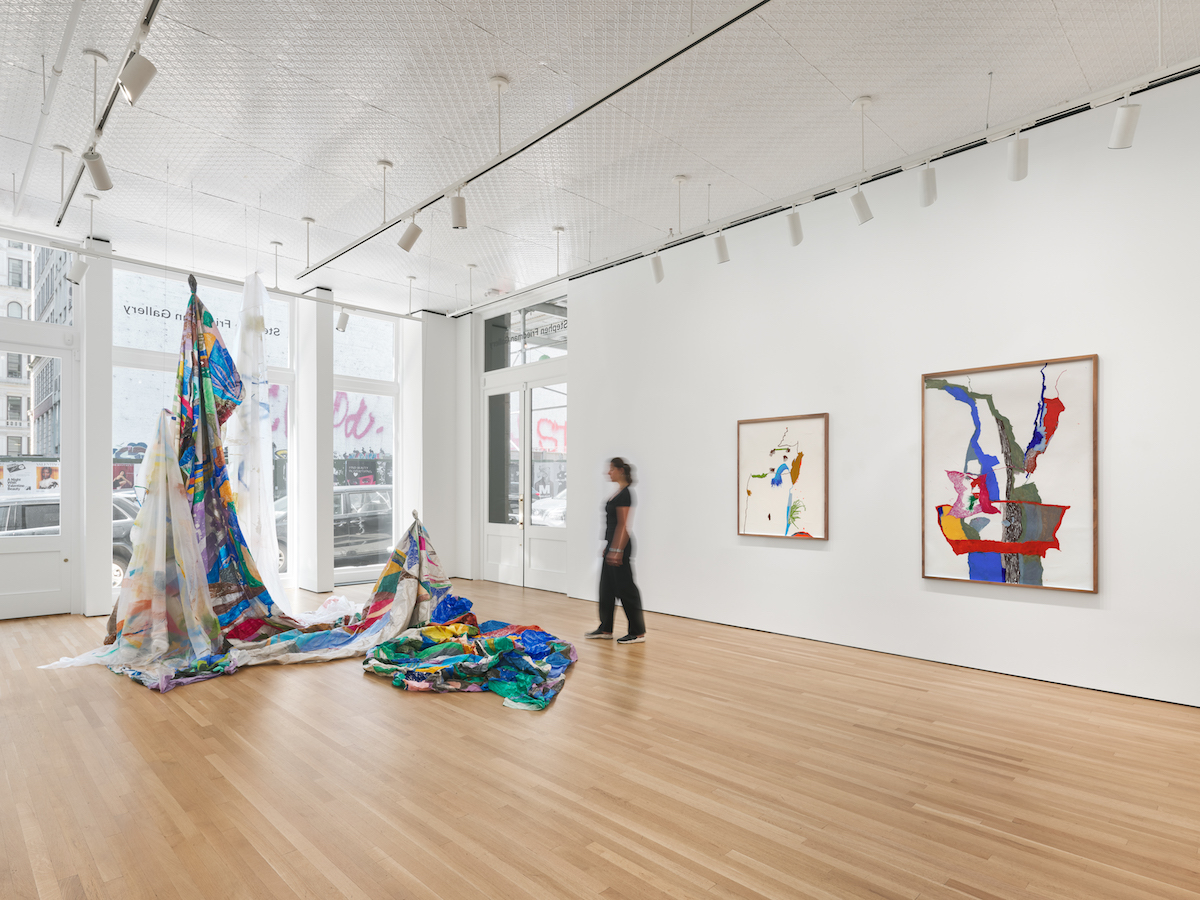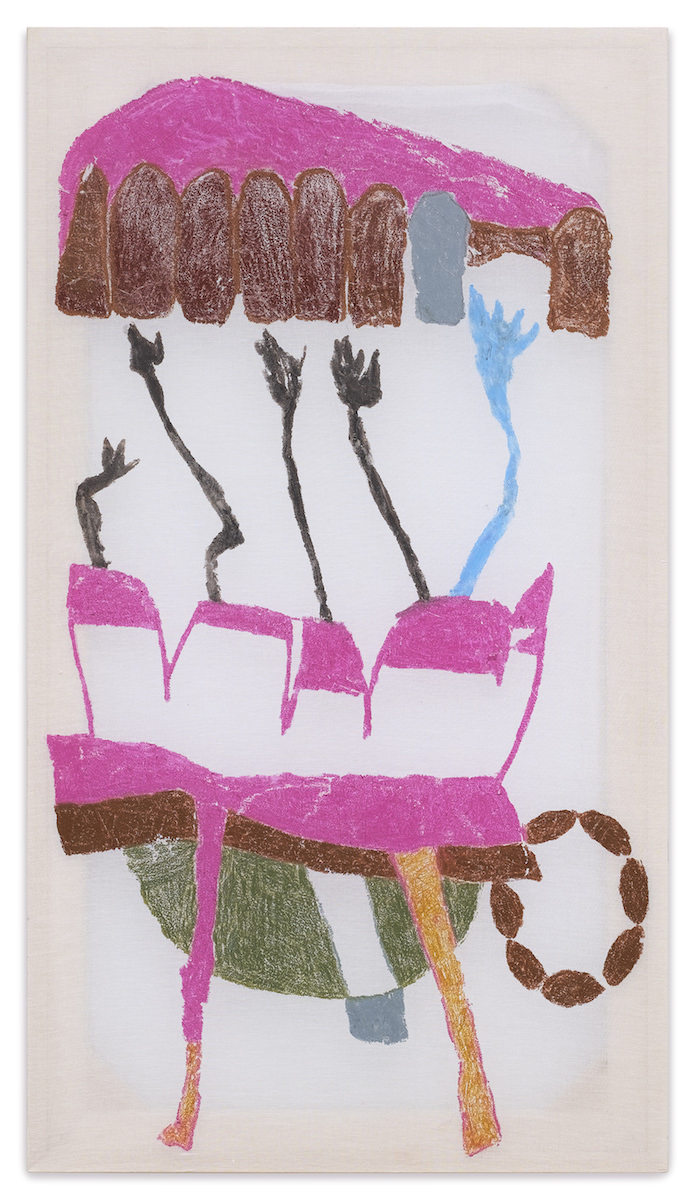Whitehot Magazine
November 2025
"The Best Art In The World"
"The Best Art In The World"
November 2025
Ana Cláudia Almeida’s Emoting Abstraction
 Ana Cláudia Almeida, “Fim (over again)” , 2025. oil on canvas, 125 x 231inches. © Ana Cláudia Almeida. Courtesy the artist; Fortes D’Aloia & Gabriel, São Paulo and Rio de Janeiro; Quadra, São Paulo and Rio de Janeiro; and Stephen Friedman Gallery, London and New York. Photo: Matthew Sherman
Ana Cláudia Almeida, “Fim (over again)” , 2025. oil on canvas, 125 x 231inches. © Ana Cláudia Almeida. Courtesy the artist; Fortes D’Aloia & Gabriel, São Paulo and Rio de Janeiro; Quadra, São Paulo and Rio de Janeiro; and Stephen Friedman Gallery, London and New York. Photo: Matthew Sherman
By EDWARD WAISNIS October 28, 2025
Debuting across the press (New York, Artsy and Vogue magazines) as part of a coterie of up-and-comers, in the art world, Ana Cláudia Almeida draws inspiration–and this premiere exhibitions’s title–from Tim Maia’s–R.I.P.–song Over Again; imparting (re)discovery of two core inseparable elements intrinsic to Almeida’s practice–hope and freedom–as they relate to Black power and fed by the rhythms of Maia’s anthem. Leaving meaning and prospect to reside in the mix.
Though touted as a multi-media artist, from painting, drawing and sculpture to video, and though the show all of those iterations (cited in the press release), Almeida’s strength, to my mind, excels in the realm of straightforward painting. Confirmed by the two oils on canvas, Licking and the magisterial, and monumentally-scaled at over nineteen feet across, Fim (over again), all of the works are from 2025; the former, a vertical tablet, conveys a deeply alluring sluice of mid-range hues shocked by blazing orange orbs and a wispy hint of a possible personage in the form of an outline, in the upper right quadrant, that bears resemblance to Susan Rothenberg’s cave-painting-indebted rudimentary outlines. The two bracketing Prussian blue prompt the query: Are we looking at the flow of rapid, or the striated walls of a gorge?
The accretions of layers, the history it imparts, the sensuality of the substance is adjusted to coordinate a swoon. Deep understanding of the passing of time, the slipperiness of the moment, is something that comes easy to Almeida; the difference between the spontaneity of drawing versus the depth of accreditation that her paintings come fully seasoned with.
 Installation view: “Over Again”, Stephen Friedman Gallery. Courtesy Fortes D’Aloia & Gabriel, São Paulo and Rio de Janeiro; Quadra, São Paulo and Rio de Janeiro; and Stephen Friedman Gallery, London and New York. Photo: Olympia Shanno
Installation view: “Over Again”, Stephen Friedman Gallery. Courtesy Fortes D’Aloia & Gabriel, São Paulo and Rio de Janeiro; Quadra, São Paulo and Rio de Janeiro; and Stephen Friedman Gallery, London and New York. Photo: Olympia Shanno
Bringing her captivation with structure in full dimensionality, Almeida gathers conglomerations of materials (of high to low value) through her multi-media-cum-sculptural works. Case in point, the predominate Cascata II, holds the crown as not only the largest shown here, but the most accomplished. Cascading down from the height of the ceiling, and draping across the floor, multi-colored a la Sam Gilliam, to which it owes allegiance, with Almeida’s knack at update on fully display. A small critique, on my part, is against the install. I found that Cascata II lost power by being placed in the galleries entrance (vestibule) and may have benefitted from closer interplay with Fim (over again). C’est la vie.
Calombo (named for the third largest Brazilian city?) and Pouring and falling cleave to the same aesthetic. Whilst Calombo can be construed as a proxy ‘tree-hugger’, given that it wraps itself around one of the galleries Corinthian columns; the former relies on a hybridization similar to Look into the ceiling, with a billowing fabric and plastic train.
 Ana Cláudia Almeida, “Jiu jitsu mouth (bocona)”, 2025, oil pastel and acrylic medium on cotton fabric, 50 x 28inches. Courtesy the artist; Fortes D’Aloia & Gabriel, São Paulo and Rio de Janeiro; Quadra, São Paulo and Rio de Janeiro; and Stephen Friedman Gallery, London and New York. Photo: Matthew Sherman
Ana Cláudia Almeida, “Jiu jitsu mouth (bocona)”, 2025, oil pastel and acrylic medium on cotton fabric, 50 x 28inches. Courtesy the artist; Fortes D’Aloia & Gabriel, São Paulo and Rio de Janeiro; Quadra, São Paulo and Rio de Janeiro; and Stephen Friedman Gallery, London and New York. Photo: Matthew Sherman
The stomping legs of what appears to be an harlequinesque marionette in Look into the ceiling, a painting hybrid, echoes in Jiu jitsu mouth (bacona), hanging nearby, with the spirit of carnival in an effervescence that draws one’s gaze with its iconic graphic qualities.
Almeida’s flagrant talent fords compositional soundings from various fronts, foraging through art historical forerunners. A stellar sensibility, previously used to great effect and fame by Joan Miró and Alexander Calder, is enlisted a century after those precedents, notably in Dew (gripe), with its rich oil pastels ponds interconnected by a network of skittish arteries. The ripped edge masses of Belly full of liquids delivers yet another strain, that of Robert Motherwell.
 Ana Cláudia Almeida, “Muscle growth”, 2025, oil pastel and acrylic medium on cotton fabric, 71 x 49inches. © Ana Cláudia Almeida. Courtesy the artist; Fortes D’Aloia & Gabriel, São Paulo and Rio de Janeiro; Quadra, São Paulo and Rio de Janeiro; and Stephen Friedman Gallery, London and New York. Photo: Matthew Sherman
Ana Cláudia Almeida, “Muscle growth”, 2025, oil pastel and acrylic medium on cotton fabric, 71 x 49inches. © Ana Cláudia Almeida. Courtesy the artist; Fortes D’Aloia & Gabriel, São Paulo and Rio de Janeiro; Quadra, São Paulo and Rio de Janeiro; and Stephen Friedman Gallery, London and New York. Photo: Matthew Sherman
Almeida delves into scapes that lean to a terra firma geological sensitivity one finds in Per Kirkeby the work seeming to default to the wispiness of flora emerging from terra firma. However, evidenced by the pair Forgot to moisturize and Muscle growth, with titles referencing derma discredits this observation, that nonetheless persists.
Other stages of Almeida summon the overlooked Michael Singer who focused on the natural environment and enlisted implications of global hazard. And, Richard Tuttle’s approach to form, collage and nonchalance abides in Bounce. Then there is the affinity with neighboring South American master Vivian Suter whose unstretched painted canvases serve as exacting precursors.
 Ana Cláudia Almeida, “Licking”, 2025, oil on canvas, 75 x 63 inches. © Ana Cláudia Almeida. Courtesy the artist; Fortes D’Aloia & Gabriel, São Paulo and Rio de Janeiro; Quadra, São Paulo and Rio de Janeiro; and Stephen Friedman Gallery, London and New York. Photo: Matthew Sherman
Ana Cláudia Almeida, “Licking”, 2025, oil on canvas, 75 x 63 inches. © Ana Cláudia Almeida. Courtesy the artist; Fortes D’Aloia & Gabriel, São Paulo and Rio de Janeiro; Quadra, São Paulo and Rio de Janeiro; and Stephen Friedman Gallery, London and New York. Photo: Matthew Sherman
At the beginning of her career Almeida produces work that elicits openings–to emotions, dreams and psychic dimensions–that provides a welcoming balm to the Shakespearian tragedy level upheaval transpiring all about in the here and now.
Ana Cláudia Almeida: Over Again
Stephen Friedman Gallery
54 Franklin Street, New York, NY 10013
September 5–November

Edward Waisnis
Edward Waisnis is an artist and filmmaker. Additionally, he is the Producer of two Quay Brothers films, Through the Weeping Glass and Unmistaken Hands, as well as having overseen the facilitation of their 2012 MoMA retrospective. His writing has appeared in Art New England, COVER, ARTextreme and STROLL.
view all articles from this author








